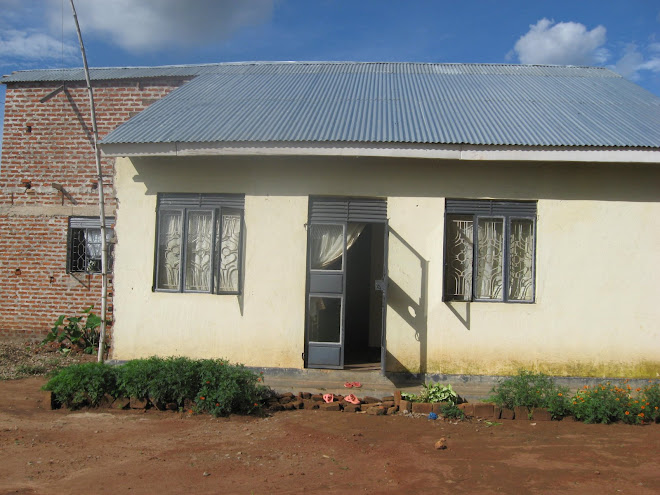So I’ve spent the last 10 days or so in Iganga for SESEMAT training. I actually have no clue what SESEMAT stands for, but it’s put on by the Ministry of Sports and Education in partnership with JICA (Japan International Cooperation Agency) which is the Japanese equivalent of Peace Corps. There were 148 teachers from all over the area that were there for the 3rd in a 6-cycle training. They were kind enough to let me jump in during the 3rd cycle, as the 1st cycle isn’t being offered till the next holiday (August). We split up into subject groups early on and spent most of the time going over various topics in the curriculum. We discussed the material, tried out some hands on activities and then came up with a lesson plan for the material. We got to try out the lessons on some willing volunteers from local schools who came for some experimental lessons on their holidays. We tried the lesson once, then met and critiqued it – discussing what went well, ideas for improvement, etc. Then, another teacher gave the improved lesson to a new group of students in the afternoon.
The two main topics we covered were genetics and support and movement. I learned so much about bones – I’m not sure I’ve ever looked at vertebrae that closely. We looked at the articulating surfaces where the ribs join, and it was a lot of fun trying to piece together the skeletons (mostly goat and chicken, I think). Then we went out and looked at this plant, Mimosa pudica, or sensitive plant. When you touch it, it moves! It folds up its leaves, so it looks like an unappetizing, dried-up plant. Pretty cool.
Genetics was another matter though. It’s not taught until 11th/12th grade here, so it becomes a big challenge to teach DNA structure, Mendelian genetics, and even some non-Mendelian genetics all within about 4 weeks or so. It’s been interesting to see the differences in the structure of biology education here versus the US. A big one is the focus on content opposed to concepts. But sometimes more challenging is how different the structure of the curriculum is. My learning of biology was based on knowing the structure of proteins, lipids, carbohydrates, and nucleic acids (DNA), moving from there to cell structure and function, and then onto reproduction, genetics, evolution, ecology. Or something like that. Here there’s more focus on classification, structures of plants and animals, reproduction, nutrition, the bigger picture biology in some ways. Which makes sense in a very agriculturally-based society, it’s just hard for me to adapt and figure out new ways of teaching material. I’ve realized that I default to how I was taught, which isn’t useful when teaching students with completely different educational backgrounds.
It’s not that one system is better than another – they’re just different. Okay, I like the concept-based approach, but I’m really interested to learn more about how the curriculum is organized. It’s just challenging to restructure how biology ideas are organized in my head….
Anyways, I haven’t had much luck with internet due to busy days, and the inadvisability of traveling at night. I’m borrowing another PCV’s computer who is being kind enough to let me use his internet. I’m headed back to site today, and am honestly looking forward to getting home. Which is a nice feeling.
The term starts on Monday, though the students will be in beginning of term exams for a week or so. So, my co-teacher and I will start lesson planning on Monday. Then things should start getting pretty busy. I’m looking forward to having classes to teach. That’s about it for now. Hopefully it won’t be so long until the next post…
Thursday, May 21, 2009
Subscribe to:
Post Comments (Atom)

Hi!
ReplyDeleteI just accepted my Uganda invite (the August group). I was wondering if there was anything that you packed that you didn't need and anything that you wished you had brought but didn't. Any thoughts would be greatly appreciated! I'm not a very good packer :)
Thanks,
Sara